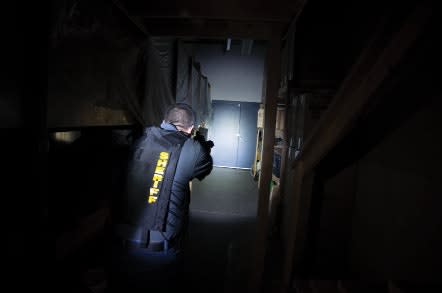Your training in low-light building searches should include such principles and techniques as how to use off-center vision, read the light; operate from the lowest level of light; avoid backlighting, see from the threat's viewpoint, light and move, and dominate with light.
Let's look a little closer at these principles and techniques to truly appreciate their value in low-light operations.
Off-Center Vision—To get the most acute vision at night, shift your vision 5 to 15 degrees to one side, so that the light falls primarily on the rods of your eyes. The rods are located on the periphery of the retina and provide our highest resolution vision in a low-light environment. Eccentric or off-center vision involves looking off to the side of the object of interest then scanning its periphery using short three-second movements. Three seconds allows the rods adequate stimulation time. In the dark, extra stimulation time is needed for the rods to gather sufficient information to form visual images.
Read the Light—You must be able to look over the area and make some clear assessments to inform your tactical decisions. Observe and assess the levels of light, the shadows, the darker areas, cover concealment, movement, and anything else that allows you to gain an advantage. The bad guy can only be in the areas that are not illuminated and that you can't see into.
At this point you are starting to create a plan. What are the overall lighting conditions that you are "reading?" Are you faced with a blinding light? How about the light behind you? If you move will you become the classic silhouette target? Can you direct enough light forward to overcome the backlit condition? What about the dark holes? Identify what areas you can't see into. How will the contents of the room affect your use of the light? What in the room could cause you to compromise yourself with your own light? Take the time to make an accurate assessment of your environment. After all, your plan of action will be based on the information processed by this observation.












